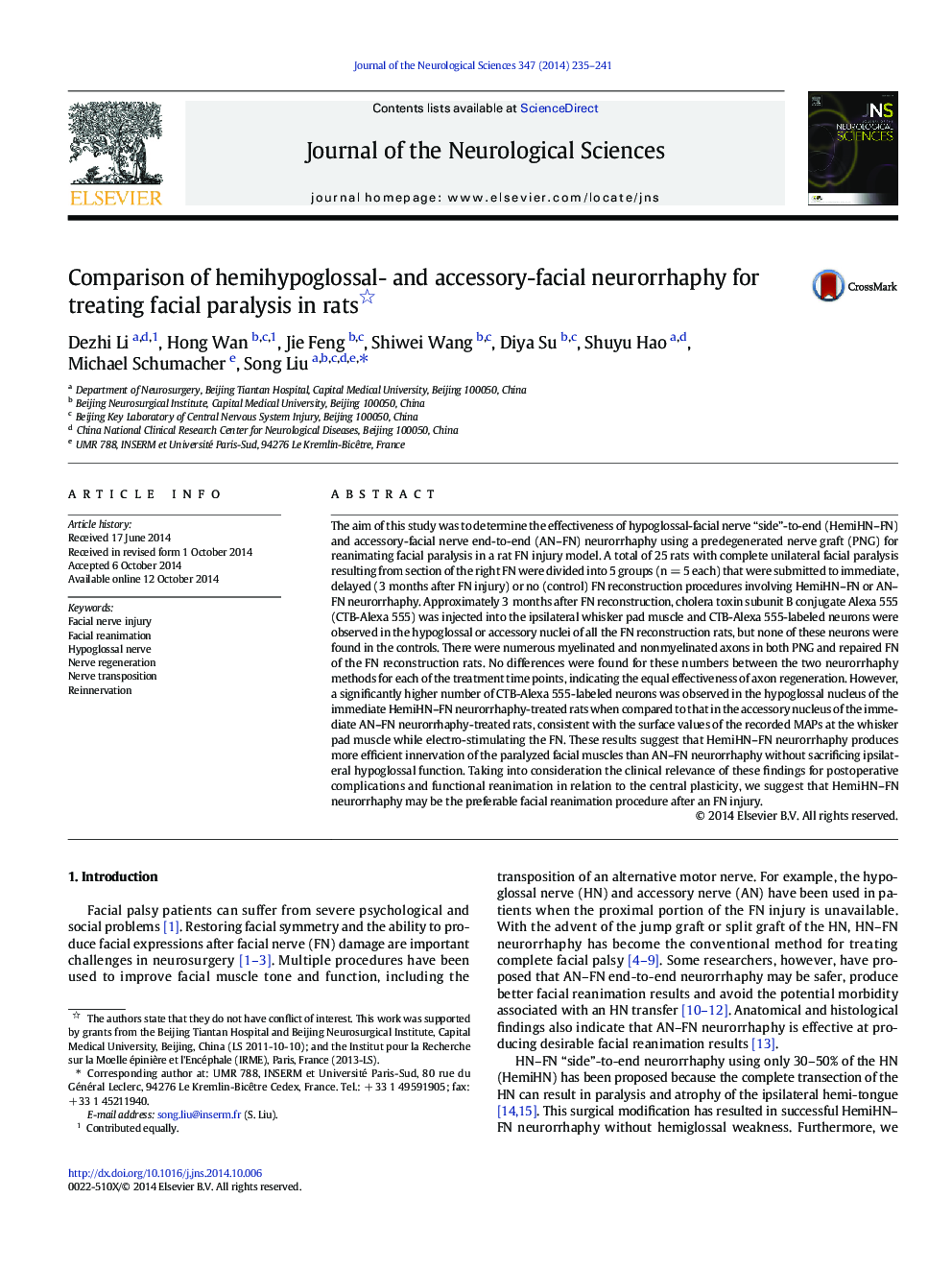| Article ID | Journal | Published Year | Pages | File Type |
|---|---|---|---|---|
| 8276740 | Journal of the Neurological Sciences | 2014 | 7 Pages |
Abstract
The aim of this study was to determine the effectiveness of hypoglossal-facial nerve “side”-to-end (HemiHN-FN) and accessory-facial nerve end-to-end (AN-FN) neurorrhaphy using a predegenerated nerve graft (PNG) for reanimating facial paralysis in a rat FN injury model. A total of 25 rats with complete unilateral facial paralysis resulting from section of the right FN were divided into 5 groups (n = 5 each) that were submitted to immediate, delayed (3 months after FN injury) or no (control) FN reconstruction procedures involving HemiHN-FN or AN-FN neurorrhaphy. Approximately 3 months after FN reconstruction, cholera toxin subunit B conjugate Alexa 555 (CTB-Alexa 555) was injected into the ipsilateral whisker pad muscle and CTB-Alexa 555-labeled neurons were observed in the hypoglossal or accessory nuclei of all the FN reconstruction rats, but none of these neurons were found in the controls. There were numerous myelinated and nonmyelinated axons in both PNG and repaired FN of the FN reconstruction rats. No differences were found for these numbers between the two neurorrhaphy methods for each of the treatment time points, indicating the equal effectiveness of axon regeneration. However, a significantly higher number of CTB-Alexa 555-labeled neurons was observed in the hypoglossal nucleus of the immediate HemiHN-FN neurorrhaphy-treated rats when compared to that in the accessory nucleus of the immediate AN-FN neurorrhaphy-treated rats, consistent with the surface values of the recorded MAPs at the whisker pad muscle while electro-stimulating the FN. These results suggest that HemiHN-FN neurorrhaphy produces more efficient innervation of the paralyzed facial muscles than AN-FN neurorrhaphy without sacrificing ipsilateral hypoglossal function. Taking into consideration the clinical relevance of these findings for postoperative complications and functional reanimation in relation to the central plasticity, we suggest that HemiHN-FN neurorrhaphy may be the preferable facial reanimation procedure after an FN injury.
Keywords
Related Topics
Life Sciences
Biochemistry, Genetics and Molecular Biology
Ageing
Authors
Dezhi Li, Hong Wan, Jie Feng, Shiwei Wang, Diya Su, Shuyu Hao, Michael Schumacher, Song Liu,
